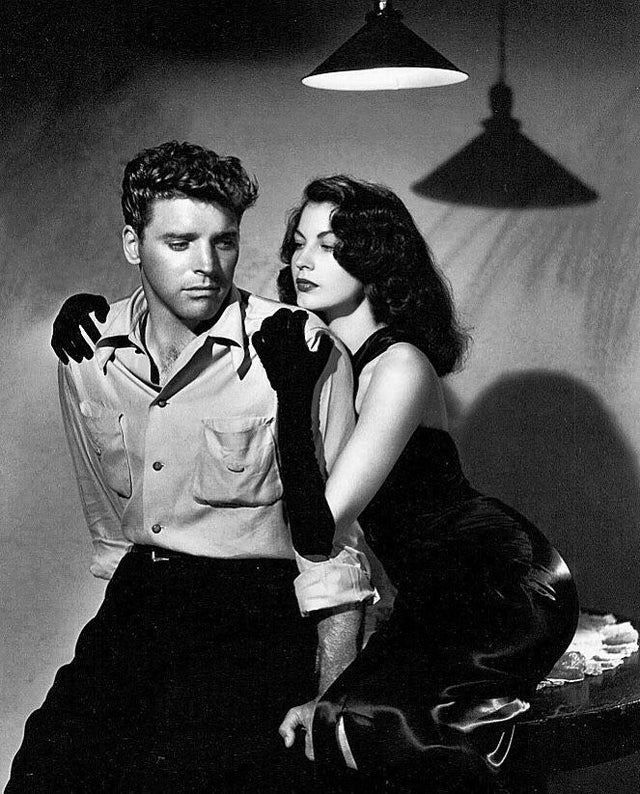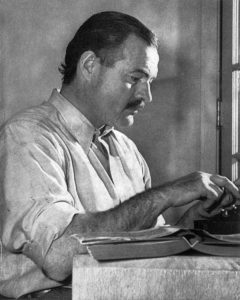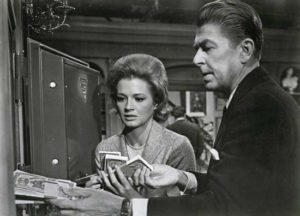
Ernest Hemingway on gangsters
A new podcast discussion about 'The Killers' recalls the Nobel Prize winner’s early years in Midwestern cities torn by organized crime

Here’s how the story goes:
Two hit men, Al and Max, enter Henry’s “lunch-room” in a town outside Chicago, looking to kill a former heavyweight prizefighter “for a friend.”
The ex-boxer, a Swede named Ole Anderson, doesn’t show up, so, after holding those in the diner hostage, the gangsters leave, giving a customer, young Nick Adams, time to go warn Ole Anderson at the local “rooming-house” where he lives.
Lying in a bed that’s too short for him, the ex-boxer is resigned to his grim fate, knowing that running away from the hit men or going to the police won’t do any good. “There ain’t anything to do,” he tells Nick.
Shortly after this, the story ends with no clear resolution or any real explanation of what the prizefighter did to seal his fate, but leaving readers with a sense of dread.
This dialogue-rich tale, published in 1927 as a short story titled “The Killers,” is not the work of a pulp writer churning out a gory yarn for some dime-store detective magazine. Set in Summit, Illinois, near Al Capone’s Chicago, it is one of the great works of world literature, written by a former newspaper reporter still in his twenties, Ernest Hemingway.
Known for ground-breaking fiction tightly packed with vivid descriptions and fluid dialogue, and populated with troubled, resilient characters, the Nobel Prize-winning Hemingway also touched on the criminal underworld he knew of during his formative years. Born in 1899, Hemingway, before his decades-long global adventures, spent time in two Midwestern cities ripped by organized crime: Chicago and Kansas City.

The author of The Sun Also Rises, A Farewell to Arms and other literary classics grew up near Chicago, in Oak Park, Illinois, before landing a job through a relative as a cub reporter at the Kansas City Star instead of going to college.
Still a teenager, Hemingway worked at the Star from October 18, 1917, to April 30, 1918, covering the General Hospital and crime among other subjects, then went to Italy during World War I as a Red Cross ambulance driver. In July 1918, he was delivering chocolates and cigarettes to Italian troops along the Piave River in northern Italy when he was wounded by an Austrian Minenwerfer mortar shell.
After the war, while in his early twenties, Hemingway was a reporter for the Toronto Star in Canada and Europe, filing stories on topics that included crime in Chicago and bootleggers during Prohibition smuggling liquor from Canada into the United States. “Single quarts cost fifteen dollars,” he wrote in one newspaper story about Canadian whiskey brought into the U.S.
“The Killers” is in step with issues such as these and later inspired a couple of Hollywood movies that veered from the terse short story in establishing their own plot lines and settings. The most notable version, with only the first few minutes resembling Hemingway’s story, was released on August 28, 1946, and starred Burt Lancaster and Ava Gardner.
“Back in the gangster-glutted twenties, Ernest Hemingway wrote a morbid tale about two gunmen waiting in a lunchroom for a man they were hired to kill,” wrote Bosley Crowther in The New York Times the day after Universal Pictures released the crime thriller. Produced for $875,00, the movie grossed $3 million in the years following World War II. Although the expanded plot “may not be precisely what Hemingway had in mind,” Crowther wrote in 1946, the film is “taut and absorbing.”
All these years later, “The Killers” cropped up again this fall in an episode from a new podcast series available on The Hemingway Society website. The series explores different aspects of Hemingway’s experiences, presenting a fresh take on his life and his lasting contributions to literature. The newest episode of “One True Podcast” features an interview with actor Stacy Keach, who briefly discusses the short story and 1946 film by director Robert Siodmak.
“I love ‘The Killers,’ ” Keach says during the podcast, calling the short story “one of the few Hemingways that actually worked as a movie.”
While “The Killers” is one of Hemingway’s best-known stories, it is not the only piece among his early work dealing with criminal matters in the Midwest. He also included crime vignettes set in Kansas City and Chicago in a collection of short stories titled In Our Time, published when the author was only in his mid-twenties. The book helped establish Hemingway’s compact, unadorned style and set him on his way as an innovative, modern voice emerging from the post-World War I Lost Generation.
The thematic strength of Hemingway’s fiction is one factor separating him from writers whose work is mainly plot-driven, said Carl Eby, an English professor at Appalachian State University and treasurer of The Hemingway Society.
Eby said Hemingway wrote “with a great deal of sympathy for those on the margins.”

“It’s about violence and trauma in the contemporary world,” Eby said in a telephone interview while discussing the themes in some of Hemingway’s work. “It’s not just about the plot.”
As Hemingway’s popularity grew, so did the stories, true or not, surrounding his high-profile life. One of these involved the author’s alleged brush with East Coast bootlegger Jack “Legs” Diamond. The notorious gangster supposedly put a contract out on Hemingway for engaging in a tryst with Diamond’s girlfriend at the 21 Club in New York City. But in late 1931, Legs Diamond was shot to death in Albany, New York.
This tale about Hemingway is presented as factual in an extra video feature titled “Speakeasy Tour” on the HBO website accompanying the Boardwalk Empire crime series. The series aired from 2010-2014.
In the video, Bryan McGuire, then general manager of the popular Manhattan restaurant and nightspot, recounts the story for Boardwalk Empire actors Michael Stuhlbarg and Vincent Piazza, asserting that before the hit could be carried out Diamond was killed “in some sleazy motel in Albany.”
Whether Hemingway was involved in this romance and planned hit is up for debate. Eby, a Hemingway expert soon to be the society’s president, said he has never seen verification that any of this occurred.
If it had been true, however, and a hit had been carried out, later Hemingway masterpieces such as For Whom the Bell Tolls and The Old Man and the Sea never would have come about.
Hemingway lived until age 61, killing himself with a shotgun blast at his home in Ketchum, Idaho.
In the 1987 biography Hemingway, author Kenneth S. Lynn offers his view on the famous writer’s legacy.
“Through the enormous curiosity and gusto with which he pursued new adventures and the valorous dedication he brought to his art,” Lynn writes, “he affirmed the possibilities of life in this tough world.”
Larry Henry is a veteran print and broadcast journalist. He served as press secretary for Nevada Governor Bob Miller, and was political editor at the Las Vegas Sun and managing editor at KFSM-TV, the CBS affiliate in Northwest Arkansas. Henry taught journalism at Haas Hall Academy in Bentonville, Arkansas, and now is the headmaster at the school’s campus in Rogers, Arkansas. The Mob in Pop Culture blog appears monthly.
Feedback or questions? Email blog@themobmuseum.org





